An International Perspective on Clinical Research in SLP Cleft Care
Please enter a valid quantity
Please select a product format
That product is out of stock
BEFORE YOU BUY...
This course is one of more than 750+ CE courses in the ASHA Learning Pass, which gives you unlimited access to more than 1,350 hours of CE content for the cost of just one or two a la carte courses.
*If this is a recent SIG Perspectives course, you must also be a Special Interest Group (SIG) affiliate to unlock it as part of your subscription.
Already an ASHA Learning Pass subscriber?
Login
This SIG 5 activity includes three articles from a forum aimed at sharing research
conducted in clinical settings around the world. Two research articles analyzed surgical
and parent-led therapy approaches for improved speech and resonance outcomes. A
third tutorial described characteristics needed in an evaluation to analyze clinically
obtained data for research purposes.
The first research article is based in Brazil. It demonstrates positive long-term
outcomes in children with hypernasality/velopharyngeal dysfunction using the
Sommerlad procedure of palatal re-repair to treat residual velopharyngeal insufficiency.
The reported scores were in the categories of: “hypernasality, global impression of
velopharyngeal function, and/or active speech symptoms.” Overall, this study shows
significant improvement in a large percentage of children, with less effect on older
individuals ages 17–22 years.
The second research article includes parents from a previously published twocenter
study in Ireland and the United Kingdom. The aim was to analyze parents’
experiences with parent-led articulation therapy (PLAT) following in-depth training. After
a detailed outline is provided regarding inclusion and teaching of the participants, four
main themes are identified. These include growth of parents, undertaking PLAT,
changes in children, and the future. Ultimately, the majority of parents are in favor of a
parent-led therapy approach with the caveat that in-depth training and direct supervision
from a speech-language pathologist is needed.
The third article, a tutorial, addresses the research–clinical practice gap. A
description is provided of a perceptual speech assessment protocol for cleft palate
speech, to enable clinical data to be used for research purposes. The article provides
detail related to determining the most appropriate standardized assessment tools as well
as the best ways to collect and analyze this data. Further details related to
implementation within the clinical setting are outlined. The data is easily accessible
through networking between cleft teams and Sweden’s national cleft lip and palate
registry, making retrospective research attainable in a clinical setting.
Learning
Outcomes
You will be able to:
- describe the instruments and procedures involved in the evaluation of
velopharyngeal function
- analyze the challenges and benefits from a parent’s perspective in providing
therapy at home under the supervision of an SLP
- apply necessary steps for reliable assessment of cleft palate speech
Assessment
Type
Self-assessment—Think
about what you learned and report on the Completion Form how you will use your
new knowledge.
Articles
in This Course
- Palate Re-Repair for Velopharyngeal Insufficiency Treatment: A Long-Term Auditory-Perceptual Assessment of Speech by Bruna Mara Adorno Marmontel Araújo, Andressa
Sharllene Carneiro da Silva, Carlos Eduardo Bertier, Telma Vidotto de Sousa Brosco,
Renata Paciello Yamashita, Ana Claudia Martins Sampaio-Teixeira, and Inge Elly
Kiemle Trindade,
published online November 11, 2022
- Parent Experiences of Undertaking Therapy for Cleft Palate Speech Disorders Following
In-Depth Training by Debbie Sell, Claire O'Rourke, and Triona Sweeney,
published online July 31, 2023
- Perceptual Assessment of Cleft Palate Speech—Bridging the Gap From Research to
Clinical Practice—the Swedish Perspective by Kristina Klintö and Anette Lohmander,
published online August 7, 2023
|

